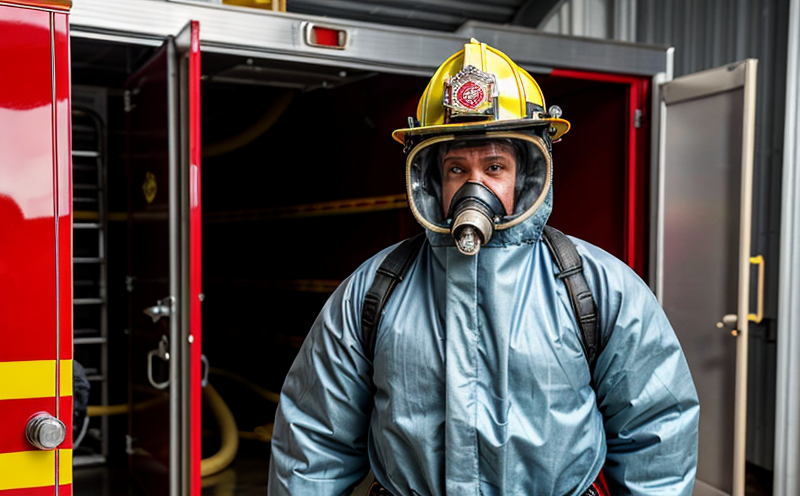Moisture Barrier and Breathability Testing
In fire safety testing, ensuring that protective clothing and equipment are both moisture-resistant and breathable is critical. Firefighters face challenging environments where they need to stay protected from the elements while maintaining comfort and efficiency during prolonged activities.
The moisture barrier and breathability of firefighter protective clothing (PPE) must withstand rigorous conditions, including high temperatures, intense heat, and prolonged exposure to water or other liquids. This testing ensures that firefighters can perform their duties safely without compromising on performance.
At our laboratory, we employ advanced techniques to assess the moisture barrier properties of these garments using standardized methods such as ISO 16723-9 for fabric resistance to water penetration and ASTM F1864 for seam leakage. These tests are crucial in verifying that the clothing maintains its integrity under extreme conditions.
For breathability, we use ASTM F1862 which measures the air permeability of fabrics used in fire protective clothing. This test ensures that moisture can evaporate from the skin while still providing adequate protection against external hazards. The balance between these two critical factors is essential for the comfort and safety of firefighters.
Proper sample preparation is vital for accurate testing results. Specimens are cut according to specific dimensions outlined in international standards like ISO 16723-9, ensuring consistency across all tests. Once prepared, they undergo rigorous mechanical stress tests to simulate real-world usage conditions. This process helps identify any potential weaknesses or failures that could compromise the integrity of the protective gear.
In addition to laboratory testing, our facilities also offer field trials where samples are exposed to actual fire scenarios under controlled environments. These trials provide valuable insights into how well the clothing performs in realistic situations which cannot be fully replicated through lab-based tests alone.
The importance of this service extends beyond just compliance with regulations; it ensures that every piece of protective gear meets or exceeds industry standards, protecting our brave firefighters who put their lives on the line daily. By offering comprehensive moisture barrier and breathability testing services, we contribute significantly to enhancing occupational safety in firefighting operations.
Quality and Reliability Assurance
Our commitment to quality does not stop at successful test results. We ensure that each sample is processed under strict protocols, using calibrated equipment maintained by certified technicians. Regular calibration checks guarantee consistent accuracy across all measurements.
Every result comes accompanied by a detailed report outlining the findings of each test conducted. These reports are meticulously prepared to include raw data alongside interpretations and recommendations for improvement where necessary. Our goal is not only to meet but exceed expectations set forth by relevant international standards while providing valuable insights that can drive continuous improvements within your organization.
International Acceptance and Recognition
The results from our moisture barrier and breathability tests are internationally recognized, ensuring that the protective clothing passes muster anywhere in the world. Compliance with these rigorous standards is a testament to the reliability of our services.
Our laboratory adheres strictly to international norms such as ISO 16723-9 for water resistance testing, ASTM F1864 for seam leakage detection, and ASTM F1862 for air permeability assessment. These standards are respected globally, making sure that any protective clothing certified by us meets the highest quality benchmarks.
Recognizing the importance of these tests in maintaining firefighter safety worldwide, we strive to uphold the integrity of our testing process. By doing so, we contribute significantly towards enhancing occupational health and safety practices across different regions.
Competitive Advantage and Market Impact
- Elevate your brand by ensuring that all protective clothing meets or exceeds international standards, thereby increasing customer trust and satisfaction.
- Promote innovation within your organization by leveraging our expertise in developing new test protocols specifically tailored to your unique needs.
- Stay ahead of regulatory changes and trends through regular testing and analysis conducted by our experienced professionals.





